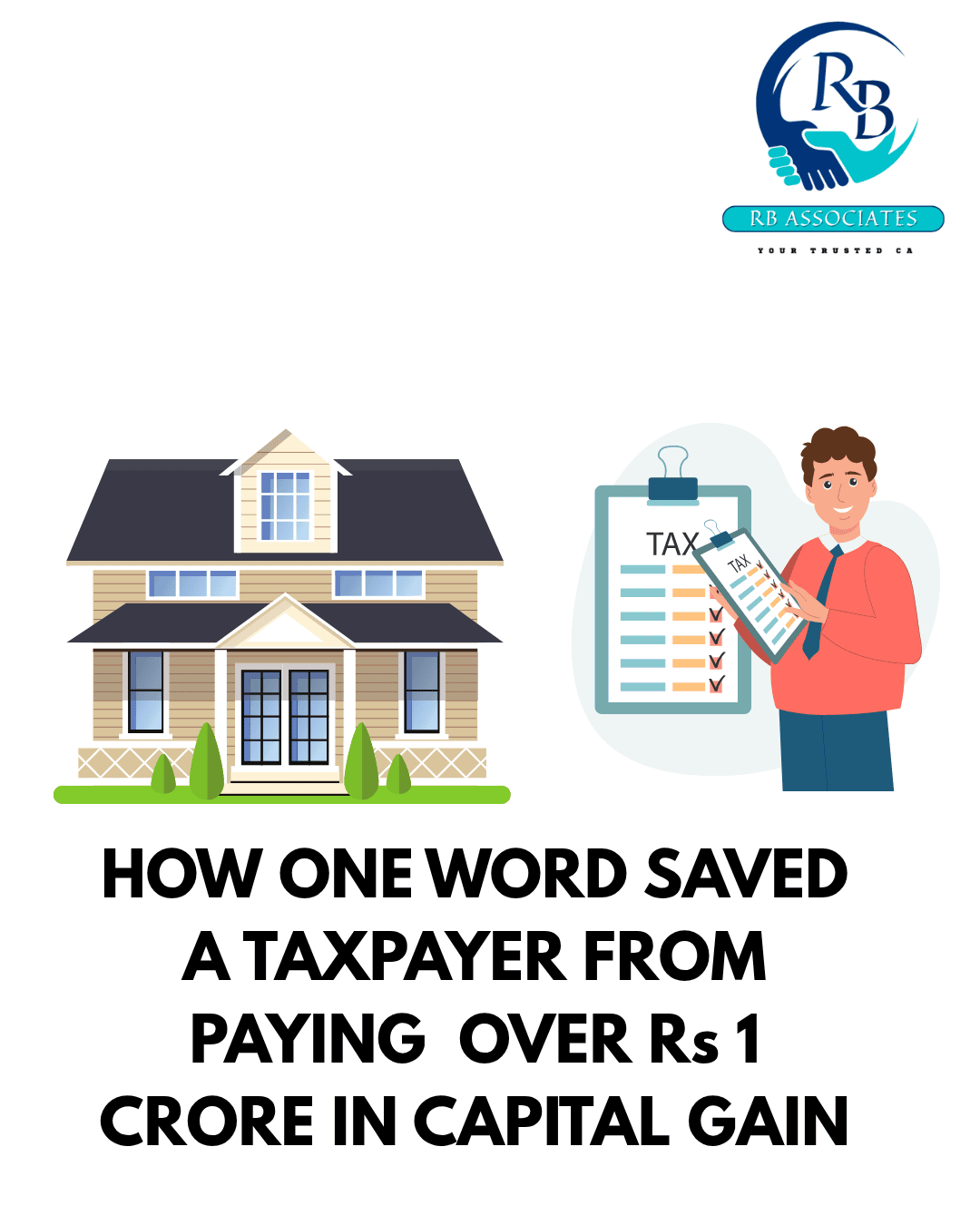The Story in Simple Words
Back in 1993, a young man named Krishnagopal B. Nangpal inherited a flat in Mumbai from his late mother. The flat was sold for ₹1.45 crore.
Under the Income-tax law, when you sell a property, you may have to pay Capital Gains Tax on the profit. However, Section 54 says that if you use that profit to buy another residential property, you can avoid paying the tax.
Mr. Nangpal’s guardian did exactly that — but went one step further. Instead of buying just one home, he bought seven row houses in Pune between 1993 and 1995, investing all the capital gains of around ₹1.08 crore.
That’s when the trouble started.

The Tax Departments View
Justice Sandeep
The Assessing Officer and later the Income Tax Appellate Tribunal (ITAT) said:
"Section 54 allows exemption only for One residential property not seven"
So they granted tax exemption for just one of the houses and taxed the rest of the gain.
The Twist- A Tiny Language Loophole
Here's where the brilliance of the case lies.
At that time, before 2014, Section 54 used the words:
"......the assessee has purchased within a pe1riod of one year before or two year after the date on which the transfer took place. a residential house....
The law did not say "one residential house" or single residential house".
The taxpayer's legal team argued:
* " A residential house" descriptive not a strict number.
* The law didn't put a cap on how many houses could be purchased.
* As long as all the Capital Gains were invested in residential properties within the allowed time, the exemption should apply.
The Bombay High Court's Ruling (22 July 2025)
1. Wording Matters: At the time of the Transaction (1993-95), the phrase was "a residential house," not "one residential house."
2. Beneficial interpretation: Section 54 is a beneficial provision, meant to give relief to taxpayers- So in case of doubt, the law should be interpreted liberally in their favor.
3. Multiple homes allowed: Since there was no explicit restriction then, the purchased of multiple houses still qualified for full exemption.
4. Result: Entire capital gains exempt- No Income Tax Payable on the Rs. 1.08 Crore gain.
Case Reference:
Krishnagopal B. Nangpal Vs Deputy Commissioner of Income Tax (Bombay HC, Judgment dated 22 July 2025)
Section 54 — Then vs. Now
| Aspect | Old Law (Pre-2014) | Current Law (AY 2025-26) |
|---|---|---|
| Wording | “a residential house” (descriptive) | “one residential house in India” (restrictive) |
| Number of properties | Multiple allowed (as per court interpretation) | Only one property eligible for exemption |
| Location restriction | Could be anywhere in India (foreign properties not covered) | Must be in India |
| Investment limit | No upper monetary limit | Max. investment eligible = ₹10 crore (introduced in Budget 2023) |
| Special concession | — | For AY 2020-21 onwards: Once in a lifetime, 2 houses allowed if gain ≤ ₹2 crore |
Key Learnings for Taxpayers
1. Small words make big differences - "a" vs "one" changed the outcome completely.
In a Nutshell
In 1993, the law said “a residential house”.
In 2025, the Bombay High Court said — that means multiple houses are okay.
If you did the same thing today? You’d be taxed — unless it’s just one property, and even then, up to ₹10 crore investment limit.

